Ultimate Guide To 23andMe For Genealogy
When you purchase a DNA kit from 23andMe, you get access to several kinds of features:
- DNA Relatives
- Ethnicity estimates
- Specialist features like your percentage of Neanderthal DNA
- Health reports
This guide focuses on using 23andMe DNA results to research your family history. We don’t cover the health reports.
We also take an in-depth look at your ethnicity or ancestry composition, and other specialist features that give insight into ancient origins.
If you haven’t yet purchased a kit, read the first half of this overview. The second half takes you through how to get the best out of 23andMe. Use the Table of Contents to jump to what you need.

Table Of Contents
- What To Consider Before You Buy A DNA Kit From 23andMe
- How Much Does It Cost?
- Do You Get Different Types Of DNA Tests?
- I Tested Elsewhere. Will 23andMe Be Worth The Extra Cost?
- Your 23andMe DNA Kit Has Arrived. Here Are Our Top Tips
- How To Start Using Your 23andMe DNA Results
- Neanderthal DNA And Famous Relatives
- Ethnic Origins And Your Ancestry Composition
- Using Powerful Features To Research Relatives On 23andMe
- 23andMe And Family Trees
- Using 23andMe DNA Results On Other Websites
What To Consider Before You Buy A DNA Kit From 23andMe
Are you interested in researching your family history? 23andMe’s main benefit is access to the profiles of your closest DNA relatives in their customer database.
How big is 23andMe?
Several other companies provide a similar service. Where does 23andMe rank in terms of numbers of DNA profiles?
Our analysis shows that 23andMe has the 2nd largest DNA database of all the consumer DNA companies.
Who is behind the company?
You want the company that stores your DNA results to be reputable and financially stable.
The investors behind 23andMe include Google, Glaxo-SmithKline, and Richard Branson. One of the original founders, Anne Wojcicki, is still at the helm.
How far back do the insights go?
Your DNA relatives can include 5th cousins, which is about six generations to common great-great-great-great grandparents.
Of course, you have to figure out the family branch! But there are 23andMe tools that help with that – we get to those later.
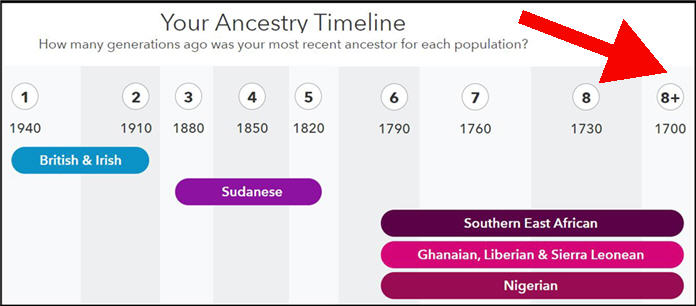
The ethnicity features (ancestry composition) estimate the origins of your ancestors back about two hundred to three hundred years.
Have you got concerns about privacy?
Some people have concerns that their DNA results could be passed on to third parties. If you have questions, check out our article on how 23andMe could share your DNA for research if you choose to opt in to participation.
If you are particularly interested in privacy, we also take an in-depth look on testing with 23andMe anonymously.
How does 23andMe compare to the alternatives?
We have detailed comparisons between 23andMe and the other major consumer DNA testing companies. Check these out:
How Much Does It Cost?
23andMe offers several different packages at different pricing.
The standard cost is about $99. You can purchase a premium package or upgrade later to get additional features.
If you’re looking at alternatives, you’ll have noticed that testing with 23andMe is a little more expensive than its major competitors.
But you won’t get health reports from Ancestry.com or MyHeritage.
Do You Get Different Types Of DNA Tests?
23andMe is an autosomal DNA test, which is the most common type. This is the one that is more useful for genealogy.
However, other types of tests may also provide insight. You may have heard of Y DNA tests (for men) and mitochondrial DNA tests (both genders).
The company does some limited testing of the X and Y chromosomes.
23andMe shows men their paternal haplogroup, and both genders get their maternal haplogroup.
These links have examples of the 23andMe Y DNA report and their mitochondrial DNA report.
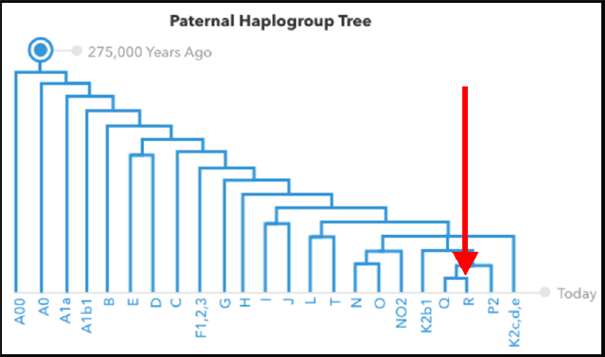
I view these limited reports as a small extra benefit. If you really want to get into these types of testing, then I’ll point you towards FamilyTreeDNA.
Does 23andMe do blood typing?
Years ago, 23andMe used to show you their estimate of your blood type.
We’ve got an article on what the 23andMe blood type reports used to look like, but I’ll simply mention here that they don’t provide this anymore.
I Tested Elsewhere. Will 23andMe Be Worth The Extra Cost?
Did you do a DNA test with another company, like Ancestry.com or MyHeritage?
It’s tantalizing to think that the 2nd cousin who could break down the brick wall in your family tree is hiding out on 23andMe!
You can’t transfer your DNA results to 23andMe. You may see mentions in older blogs that this is possible, but they don’t allow it anymore.
However, I’ve got a work-around that helps you predict how many relatives you’d get there. It also lets you work directly with some of them without making the extra purchase.
Your 23andMe DNA Kit Has Arrived. Here Are Our Top Tips.
The 23andMe DNA test works with your sample of saliva. In other words, it’s a spit test.
Some people have trouble with this step. Here are sixteen tips for making enough spit for your DNA test.
Once you’ve sent off your kit, it’s a waiting game of one to two months.
A small percentage of customers will have an extra wait due to quality issues with their sample.

How To Start Using Your 23andMe DNA Results
Your 23andMe DNA results are ready!
There are many different sections and reports on the website. It may feel a little overwhelming at first.
If you’re interested in family research, the first thing you’ll want to do is look at your list of DNA relatives.

At this point, you’re likely having one of several likely reactions.
Reaction 1: Wow, lots of 2nd, 3rd, and 4th cousins with some familiar surnames!
The sheer number of DNA relatives may surprise you.
How on earth do you tackle fifteen hundred cousins? Where do you begin? That’s easy.
Reaction 2: Who are all these people? I don’t recognize any names!
If you’re like me, your closest relative will be an unknown 3rd cousin. And you won’t recognize a single surname on the very long list.
However, a methodical approach goes a long way as you work through clusters of surnames and locations. I’ve got lots of tips on sorting and searching in our in-depth tutorial.
If you’re in a situation of unknown parentage, I’ve got some general advice for adoptees on using DNA tests to unlock family history.
Reaction 3: Uh-oh. Looks like I’ve stumbled across a family secret
My impression from several years of spending time on genealogy forums is that this is the least common situation. But it happens.
You may encounter an unknown half-sibling, aunt, or uncle. And there are other surprise scenarios.
If you’re spooked, you can always opt out of the DNA matching service. But try to be kind to people who simply want to fill in their missing family background.
Neanderthal DNA And Famous Relatives
Some of the powerful tools on 23andMe can take a little work to understand the insights they give you.
If you’re still in the early days of viewing your 23andMe results, I suggest you take a look at some fun stuff.
How much Neanderthal DNA do you have?
This feature may be the reason you did the test in the first place!

23andMe shows you your estimated percentage of Neanderthal DNA in several different ways. Is this even credible? And how do they do it?
Does 23andMe show you famous relatives?
It kinda does, and it kinda doesn’t!
I don’t take this feature very seriously, but you may as well check out 23andMe’s reports on your famous relatives.
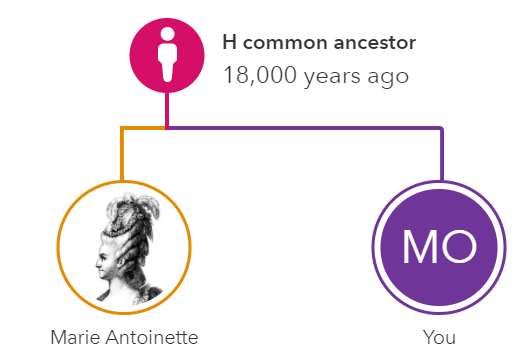
I get Marie Antoinette and Copernicus. Whoo-hoo!
Ethnic Origins And Your Ancestry Composition
23andMe gives you an estimated breakdown of your ethnic origins going back to two to three hundred years.
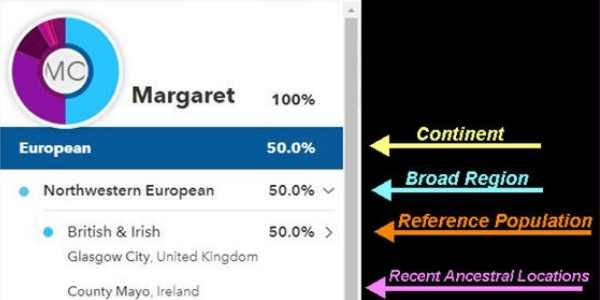
Lots of people are far more interested in their ancestry composition than in using 23andMe for genealogy research.
I’m the opposite! But I’m fascinated by how 23andMe and other companies arrive at their percentages.
They use an evolving set of techniques that are getting more accurate. But 23andMe isn’t at the finish line yet for getting these calculations right!
If you’ve got a mix of genetic heritage from different regions, you may also find their chromosome painting quite interesting.
Using Powerful Features To Research Relatives On 23andMe
23andMe doesn’t just show you a list of your closest DNA relatives in their database.
Their features also let you research how these relatives are related to each other.
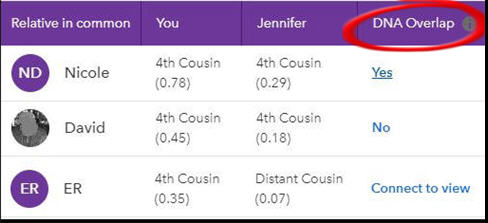
Let’s say you have ten 3rd cousins on your list. But you also have thirty great-great-grandparents. How the heck do you know who is descended from whom?
Well, some of these 3rd cousins may be siblings. Others may be first cousin to each other.
If you know these facts and have a few surnames to work with, you’re well on your way to building out your family tree.
Want even more power? Read on!
Have you never encountered a chromosome browser before? I suggest you spend your first few weeks working with the rich information in the DNA Relatives list.
This is just so you don’t get overwhelmed with new concepts in genetic genealogy.
You’re already figuring out shared percentages and centimorgans. That’s enough for your early research.
But when you feel ready to tackle the ultimate power tools on 23andMe, you’ll be diving into chromosomes and DNA segments. Specifically, you’ll be using the chromosome browsers.
Chromosome browsers and triangulation
A chromosome browser gives you a visualization of genetic information across your 23 chromosome pairs.

For genealogy research, we’re looking for pieces of DNA that we share with several relatives at the same position on the same chromosome.
That’s the starting point to identifying small groups of relatives who descend from the same common ancestor. This is called triangulation.
Does that sound complicated? Don’t worry.
Once you’ve got the hang of using the website tools, you may want to level up your game.
Do you like spreadsheets? Then you’ll love what you can do when you download the 23andMe relatives spreadsheet.
23andMe And Family Trees
Other DNA testing companies let you build family trees on their websites. 23andMe does not offer this feature.
For me, this is the biggest drawback with their DNA kit.
If my DNA relative has an online public family tree, I’d love to see it!
And I’d like my relatives to make use of my own family tree and research. 23andMe does provide a limited feature for this.
I use Ancestry.com to keep a public copy of my tree with extensive documents and records. And I’ve added a link to the Ancestry tree on my 23andMe profile.
You can use the same technique if your tree is on MyHeritage and some other websites.
The 23andMe Genetic Tree
23andme rolled out their own version of a tree back in 2019. This is very different from traditional family trees.
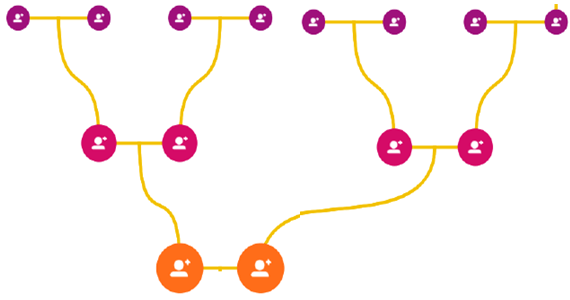
I have a detailed article on using the 23andMe genetic tree.
I personally don’t find this feature very useful. But that’s because I have very few close cousins on 23andMe. The genetic tree is supposed to auto-populate, but I just get one solitary individual.
Other customers report that they get plenty of auto-filled relatives and the predicted relationships are quite accurate.
So, mileage clearly varies. Just be sure to verify all predictions with standard genealogy research!
Using 23andMe DNA Results On Other Websites
23andMe’s lack of family trees is the biggest obstacle to using the site for family research.
However, you can transfer your DNA results to other reputable websites which give you DNA relatives with integrated family trees.
Sites like MyHeritage and FamilyTreeDNA offer their own DNA kits, so you will find new DNA relatives there.
But you’ll also find other 23andMe customers spreading their nets. Some people don’t use the same user names across different websites, or they use initials.
But you’re bound to recognize a few 23andMe relatives on these other sites. And they may have great family trees!
Here is our tutorial on downloading your DNA results from 23andMe. Then, you can work through our article on all the reputable sites where you can upload your DNA results for free.
Using MyHeritage
If you upload your 23andMe results to MyHeritage, it’s very useful to identify other relatives who are on both platforms. Check out our tutorial on ways to find your 23andMe relatives on MyHeritage.
You should also check out our general guide to using MyHeritage. It has links to our many tutorials and articles on the site’s features.
Using Ancestry.com
You can’t upload your 23andMe DNA results to Ancestry.com.
But if you want to get a heads up for some of the relatives you’ll find there, you can check out our work-around on uploading DNA to Ancestry. Basically, the trick involves using GEDmatch.
If you do decide to get a second DNA test, then it’s very useful to identify other relatives who have tested on both platforms. Follow our tutorial on ways to find your 23andMe relatives on Ancestry.